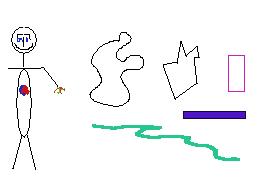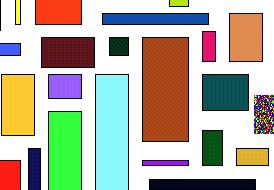 ... and Learning About The World
... and Learning About The World ... and Learning About The World
... and Learning About The World There are many mathematical ideas joined to special symbols used to
concisely portray them (once they've been understood). One is the ratio
of the length of the boundary or circumference of a circle to its diameter,
the line through the circle center which defines its widest crossing.
That quantity is called  and
pronounced by the sound pi.
and
pronounced by the sound pi.
Finding  to greater accuracy
was a significant task in mathematics up to a few hundred years ago.
to greater accuracy
was a significant task in mathematics up to a few hundred years ago.
Adding or multiplying numbers when there is no last item ...
a situation usually summarized in a shorthand way by the word infinite,
leads to two special symbols. The first represents addition; it is:
 . The second uses a
special symbol to represent multiplication:
. The second uses a
special symbol to represent multiplication: 


 LOOK AT |